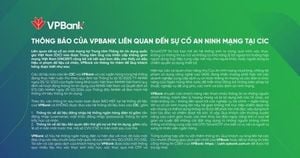The recent decision by the US government to impose export restrictions on advanced technologies, particularly artificial intelligence (AI) chips, has sent ripples of concern through Europe’s AI community and governmental circles. With these restrictions affecting 17 EU member states, the message is clear: the balance of technological power is shifting, and Europe needs to respond.
Announced by former President Joe Biden shortly before he left office, these restrictions aim to safeguard American dominance over AI technology and thwart adversaries like China and Russia from accessing advanced capabilities. According to Henna Virkkunen, EU Commissioner for Technical Sovereignty, and Maroš Šefčovič, Commissioner for the European Green Deal, this action could have both economic and security repercussions. “We believe it is also in the US economic and security interest...,” they declared, highlighting the potential for collaboration rather than conflict.
The US maintains its position by asserting the need for tighter restrictions on advanced AI technology to prevent adversaries from misusing it. Yet the EU argues for the importance of being recognized as “an economic opportunity for the US, not a security risk.” This sentiment raises questions about the future of transatlantic relations, especially when European countries host significant infrastructure for AI research and development.
The heart of the issue lies within the fact the EU’s supercomputers almost entirely depend on American-made graphics processing units (GPUs), particularly from companies like Nvidia. With five of the nine commissioned EU supercomputers situated within non-key allies as defined by the US, the restrictions may impede AI model training capacity, as countries like Luxembourg, Czechia, and Bulgaria find themselves caught under these new limitations.
Cecilia Bonefeld-Dahl, director general of DigitalEurope, expressed concern, stating, “It is safe to say...disrupting global supply chains and innovation ecosystems,” indicating the far-reaching impacts these restrictions entail. With the EU advancing plans to establish new AI factories, particularly in Greece and Luxembourg, the necessity for technology access becomes even more pressing.
These factories are intended to bolster the EU’s supercomputing capabilities, but restrictions on GPU imports threaten this goal. Ironically, as European states continue efforts to create more AI-enhanced infrastructure, tight restrictions from their primary technology supplier may deter their aspirations.
While certain US allies, such as the UK and 10 EU countries, will remain exempt from these restrictions, the remaining EU nations face strict limitations. These measures necessitate rigorous vetting processes for chip makers like TSMC and Samsung, particularly after incidents where semiconductors were rerouted illegally to blacklisted firms like Huawei Technologies.
This regulatory environment highlights the growing misalignment between the EU and US approaches to technology governance. With both parties committed to shaping the future of AI, their differing regulatory frameworks, especially concerning geopolitical challenges, pose questions about cooperation and collective security.
Some critics may see these restrictions as fostering division rather than unity, urging the establishment of councils, like the proposed EU-US Critical Tech and Dual Use Council, to navigate these challenges together. It is clear both the US and EU aim to counter China’s rapid advancements in AI; one could argue mutual cooperation rather than isolation may yield more fruitful developments for both sides.
At the crux of the matter is the balance between ensuring national security and fostering innovation. Europe is focused on ensuring it is viewed as a “trusted economic ally” rather than treated like a security threat, which could shape future technological collaboration across the Atlantic.
All eyes are on European leaders as they navigate these turbulent waters, seeking to safeguard their technological future without alienation. With significant strategic interests at stake, this dance of diplomacy and technology will likely dictate how the AI industry develops globally.
With rising global tensions and the competitive nature of technology exports, it’s imperative for European nations to address their dependency on US technology. The EU must find ways to both protect its interests and align its strategies with US objectives to cultivate collaborative prospects without jeopardizing its technological advancement.



